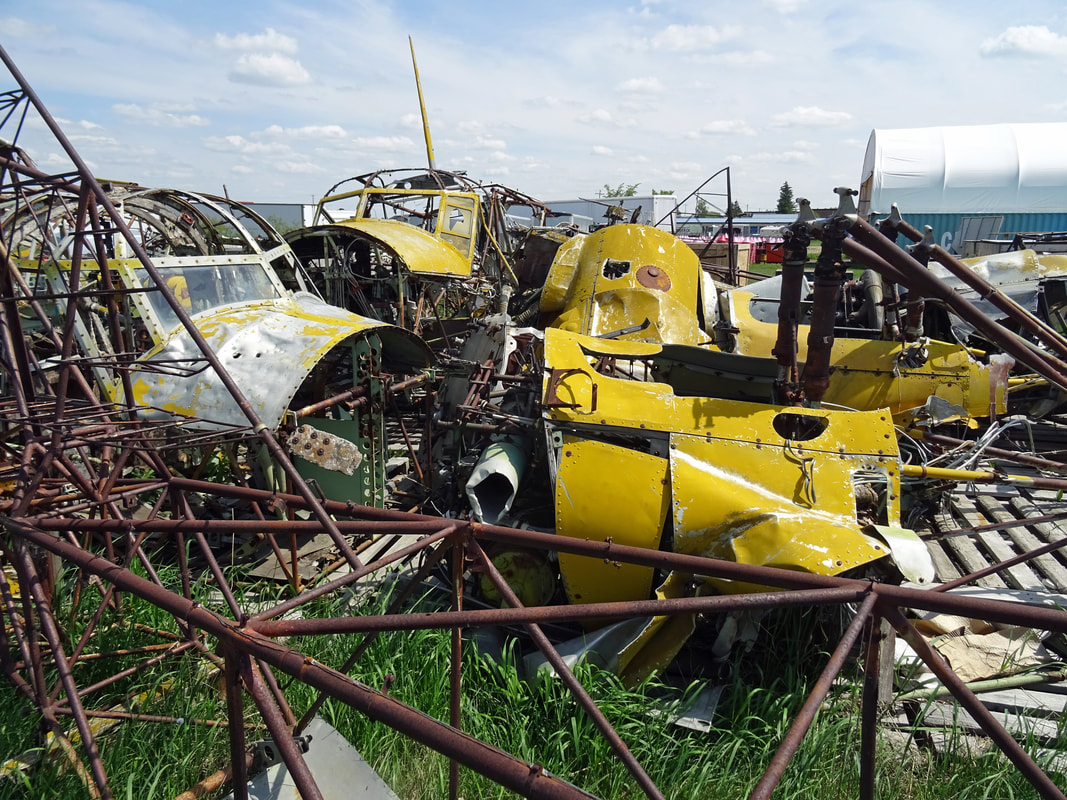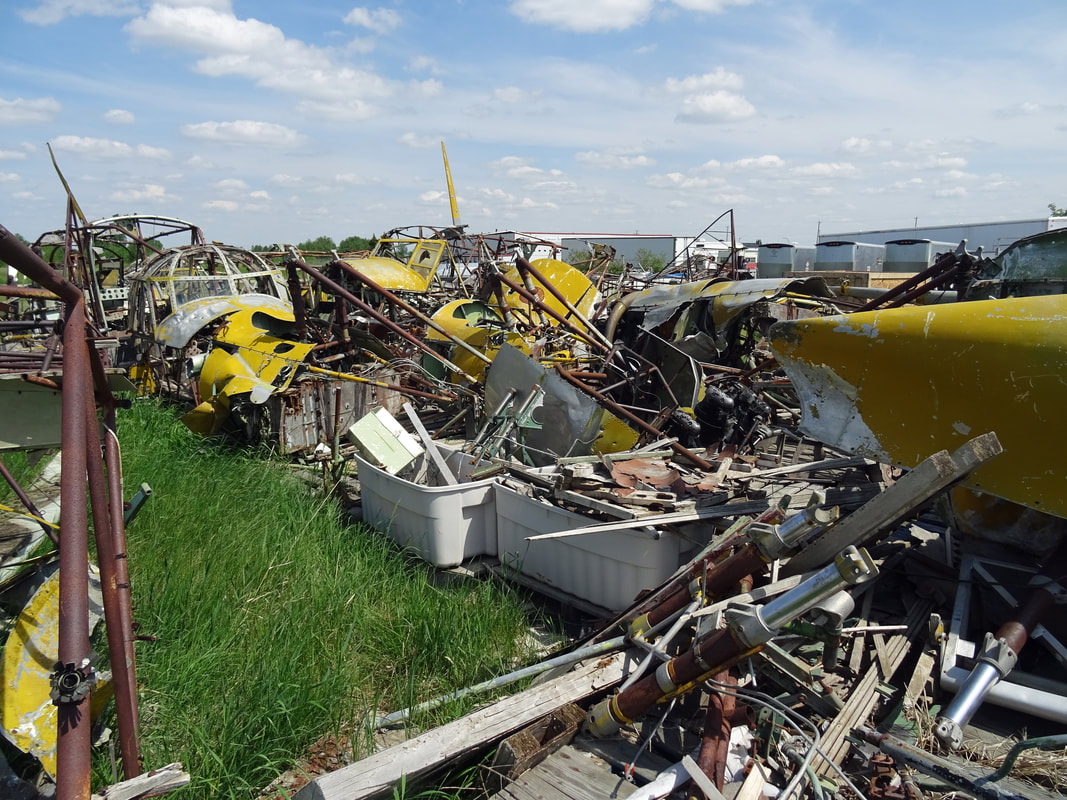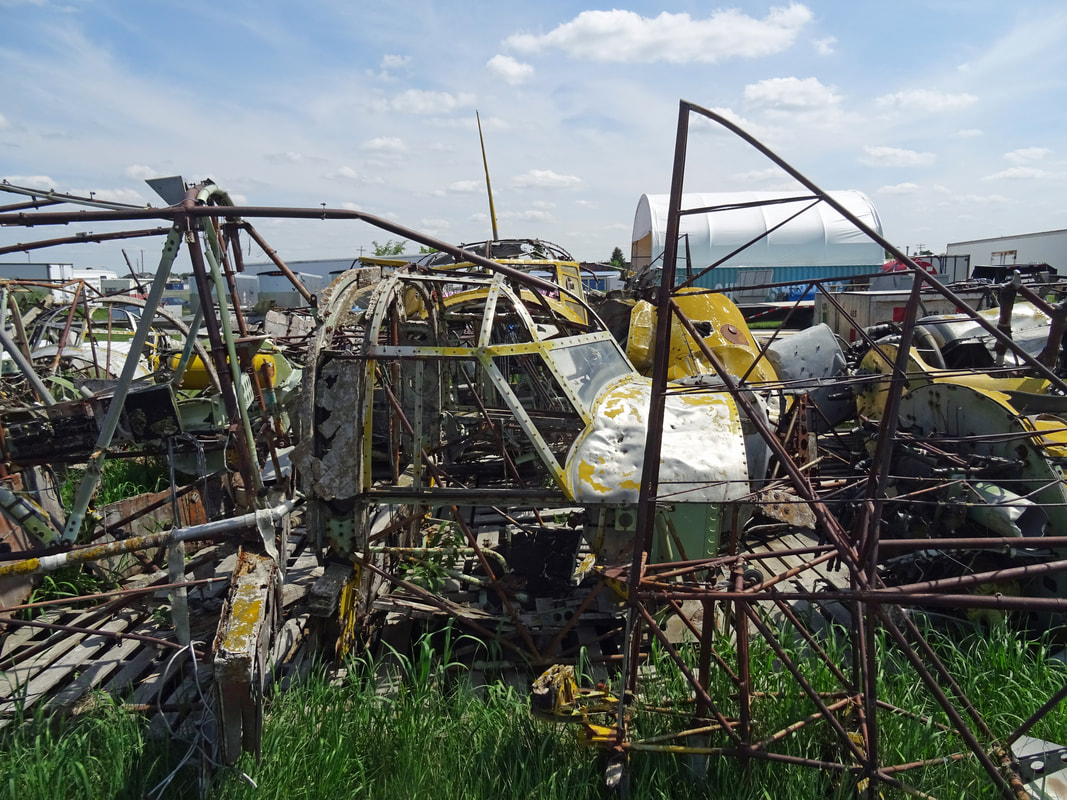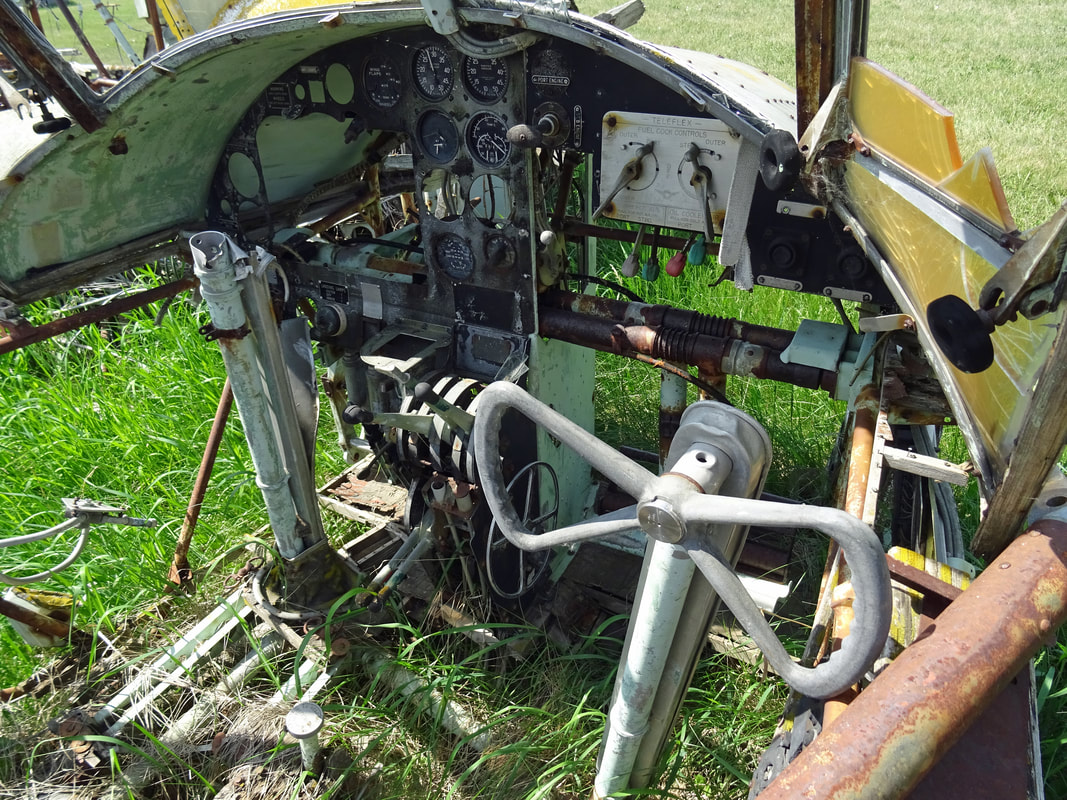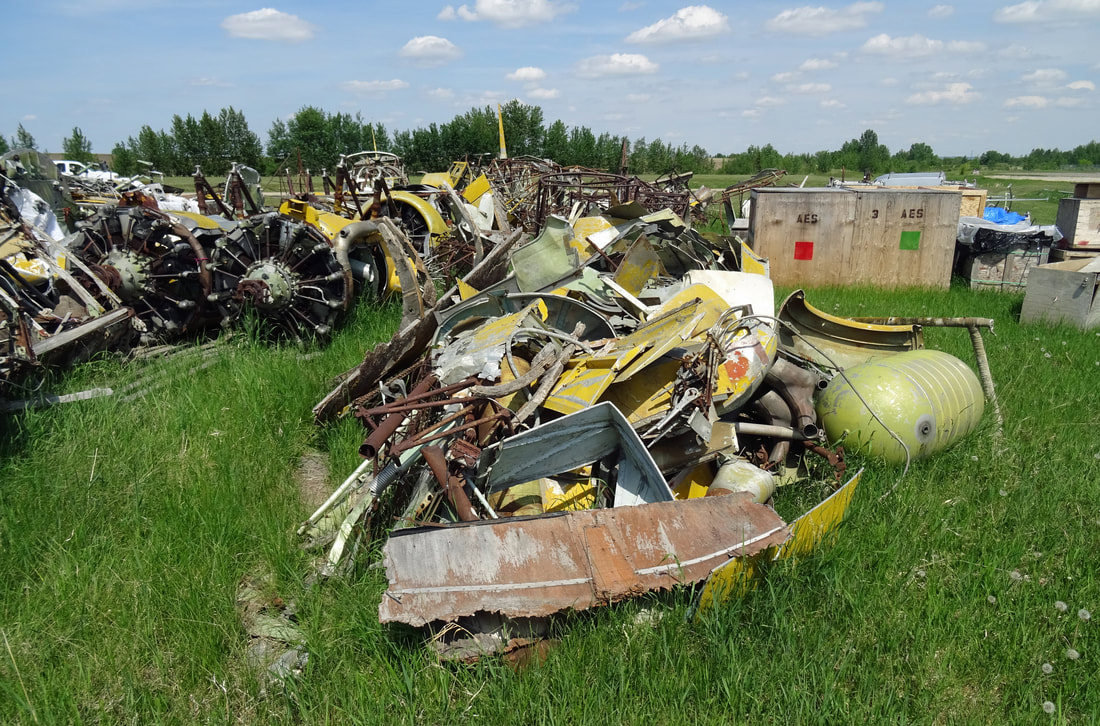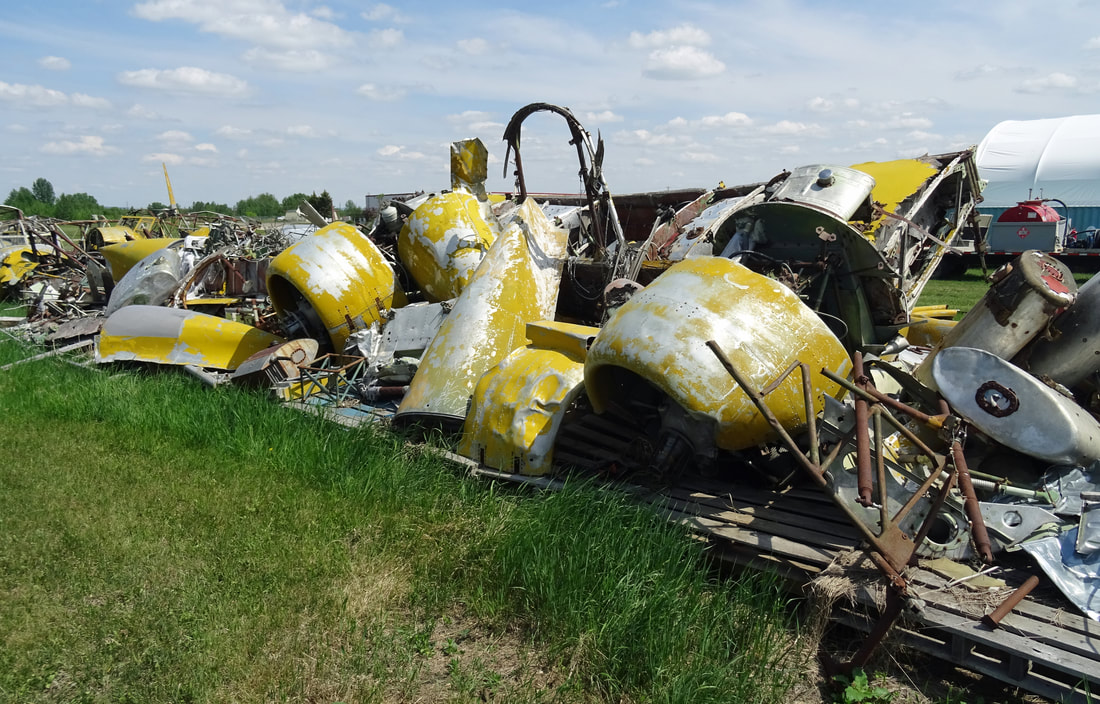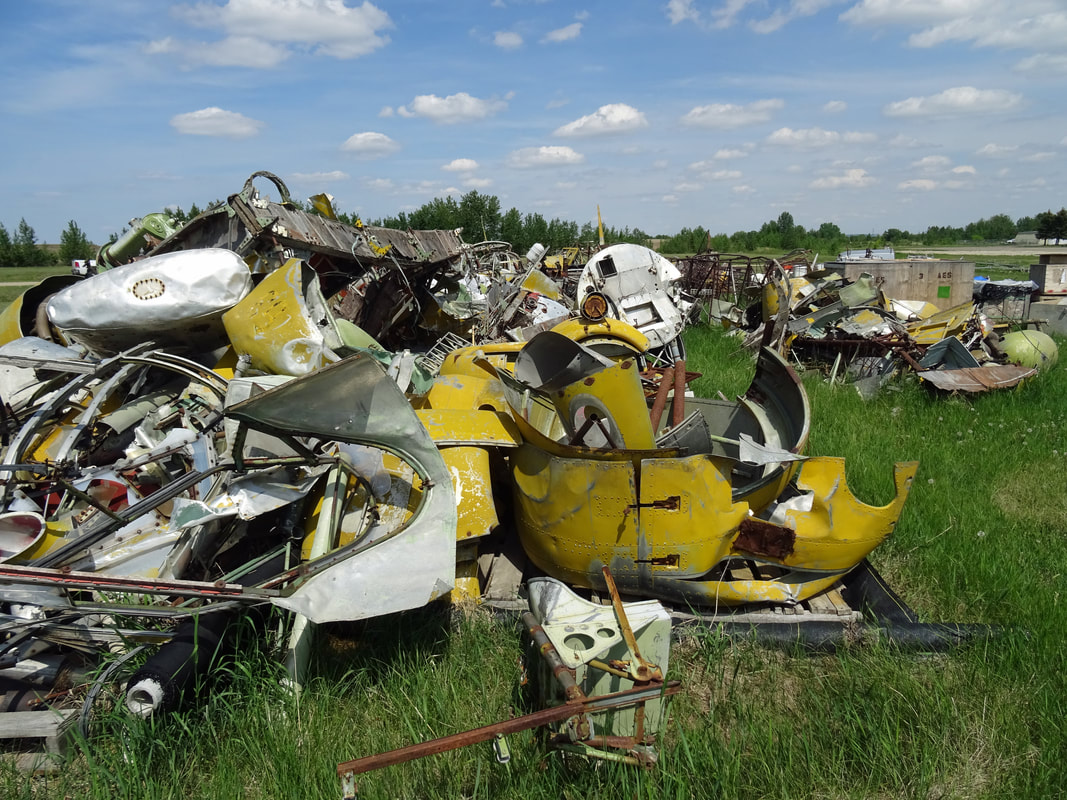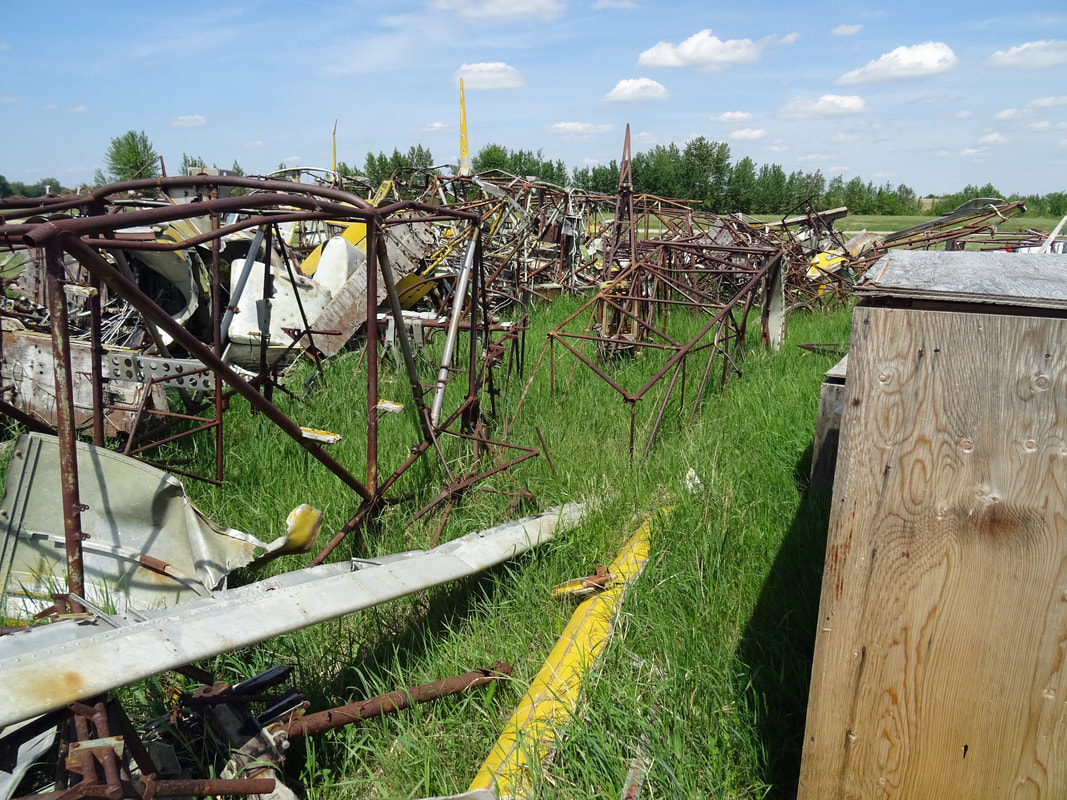Avro Anson dump at Red Deer
June 2023
A scrap pile with no order or layout. Just a jumble of old planes forgotten and left to rot away, some mere skeletons, others more complete, but all seemingly junk.
The Anson design dates back to the mid-1930's. It served many roles, light bomber, patrol aircraft, but was best suited as an air trainer.
Produced by the Avro firm in the UK, with the war in Europe demand increased to a to the point that a Canadian factory was established, early 1940's in Ontario.
This new company, Federal Aircraft, built about twenty percent of the total number of Ansons built.
In total over eleven thousand Ansons were built across several series, two thousand plus of them in Canada. Production spanned the 1930's-1950's in the UK, 1941-1945 in Canada. Ones made in Canada were mostly Series (Mark) II.
The length of the craft is some twelve meters and wingspan seventeen meters, with an operating weight of some thirty four hundred. Cruising speed was two hundred and fifty kilometers per hour.
The Anson was named after a British Admiral from the 18th century.
Most Anson trained pilots went on to fly in bombers.
The Anson carried a three or four man crew.
The Anson was the backbone of the Commonwealth Air Training Plan.
The planes were in Canada used for navigational instruction and other miscellaneous teaching roles. It functioned well in its role and was easy to fly, forgiving, simple to maintain and reliable.
Pilots destined for the European Theater were hands-on educated at any number of airbases scattered all over Southern Alberta (some of these old airport remain).
Controls were primitive, people comforts unheard of.
A pair of radial engines (from the firm Jacobs on most Canadian models) provided power to wood propellers (on Canadian models).
The Jacobs R-915 is a seven-cylinder, air-cooled, radial engine.
1.401 Mk.II’s were built in Canada; powered by two 330 hp Jacobs L-6MB R-915 engines and fitted with hydraulic landing gear retraction system.
Over twenty thousand aircrew, from all over the Commonwealth, received their training on Ansons.
Wandering about the remains, we can’t help think of those brave souls who then went on to fly in the war and didn’t make it back.
Often the remains were then dumped in the back forty, along with old trucks, retired tractors and other metal bits.
After the conflict, most of these planes were sold as scrap with many being snapped by local farmers who salvaged parts from them for other uses.
The Mark II Anson has a steel skeleton making up the body and tail. Some sections were clad in metal, others fabric. Wings were fabric covered wood. A large plywood spar anchors the wings to the body.
Museums and collectors would acquire many Ansons after the war.
- The End -


